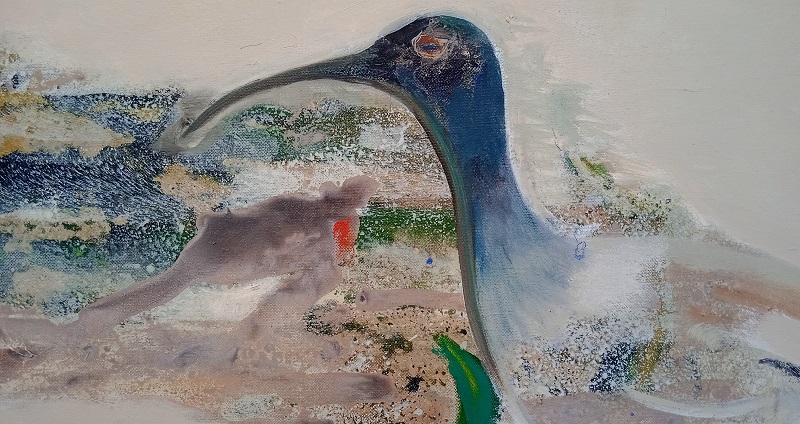What is Ibis known best for painting or inhabiting the wetlands, forest or plains? Or do they do what artists do with canvas or poets with loneliness? How can we read or see if they write visual poetry or paint? These poetical queries may have been answered in the Bengaluru-based Indian Artist Rekha Roa’s solo show, ‘Ibis Knows Best’, opened in Bharat Art Space Gallery in New Delhi, Curated by renowned curator-art critic Johny M.L.
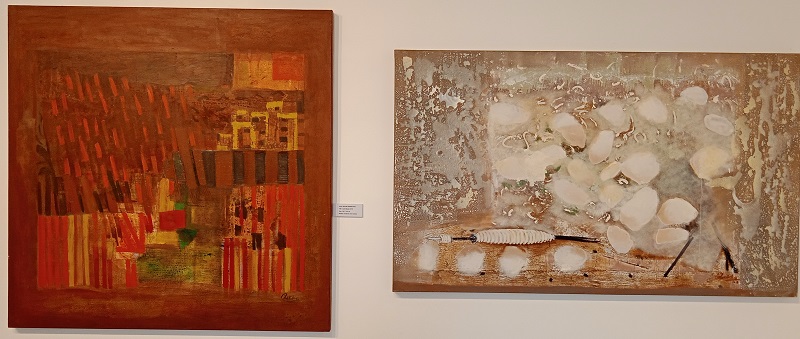
Rekha Rao (b. 1947) is the daughter of an eminent artist (late) K K Hebbar. She exhibited her works worldwide and participated in art camps and national- international shows, including Asian Biennale. NGMA, Singapore National Museum, Canberra Museum Japan, Venkatappa Museum Bengaluru, LKA New Delhi, and Times of India collected her artworks.
This show is engulfed with Rekha Roa’s ‘colouristic’ abstract and allegorical ideas about the surrounding society, life, and experience. Ibis Knows Best showcases Rekha Rao’s 2008-2023 works, culminating in her art practice lasting more than five decades, starting with her great artist’s father and continuing with her mastery. These abstract paintings carried a title, each standing in an incredibly suited terrain of ‘title’ and harbouring an abstract physique of pictorial immortality.
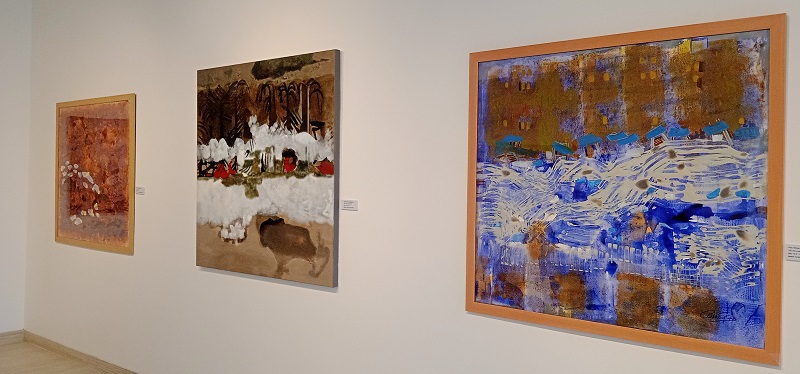
Suppose the audience’s eye is a ship. The windy evening carries that ship into an unexplored land of visuals, flows into an abstract river, or, trapped in a moment of ordinary people’s lives, becomes a flowered flower in the hair of a ‘Flower Seller’ lady? Or even drowned in ‘Kalia, the Serpent King’ poisoned river, or mazed in the visual edifice of a ‘Land Mosaic’, becomes a melting point of ‘Disconcerting Sea’, and echoed with a bird view of the ‘Varthur Lake’. We may wonder where the artist spent her ‘Summer Day’ with red flowers and a monkey, whose trails spread in the canvas as Redness; why does the eye can’t escape from the cage of colours?
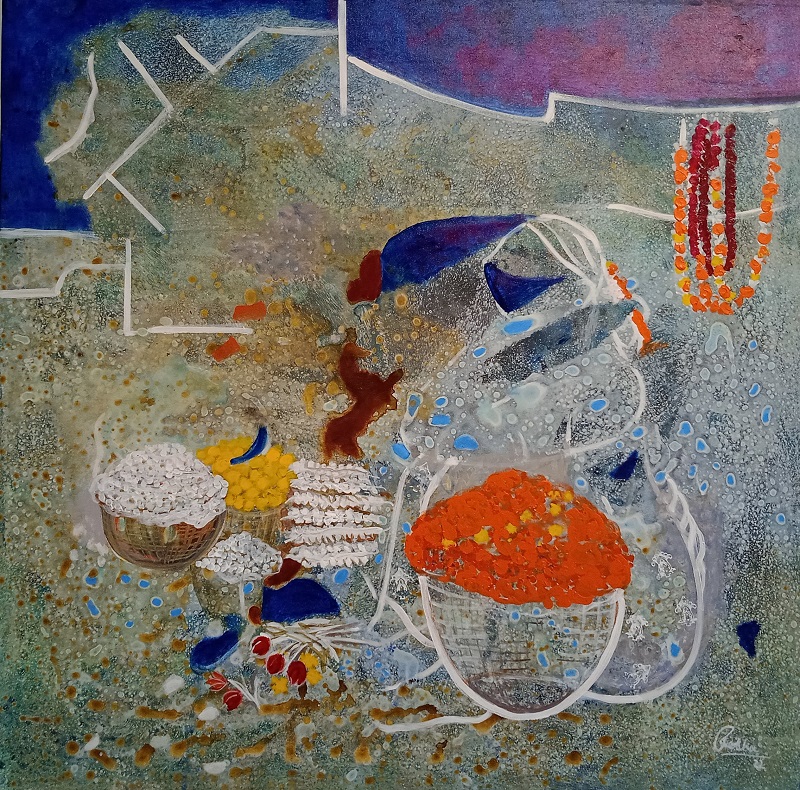
We are presumed to be furious why this ‘Bird Sanctuary’ doesn’t have many birds. Because of the sanctuary, remember the birds and their stories that shared it with bites or silently through an illustrated dialogue of an artist. In Artist ‘Reflection’, the flavour of red intrigues the way of seeing the world through a window augmented with Reddish wildflowers. That window becomes more wild and reddish when the artist reaches the melting point of ‘Summer Day, ‘Times we live in’, and ‘Tomatto Field’. Red may symbolise sorrow, loneliness, indifference, and lifelessness covered in our isolation time.
We understand that abstract art is so poetic because that elevates us into an eternal body of visual experiences, maybe as a dream or a passive seeable hallucination, when we go through this show.
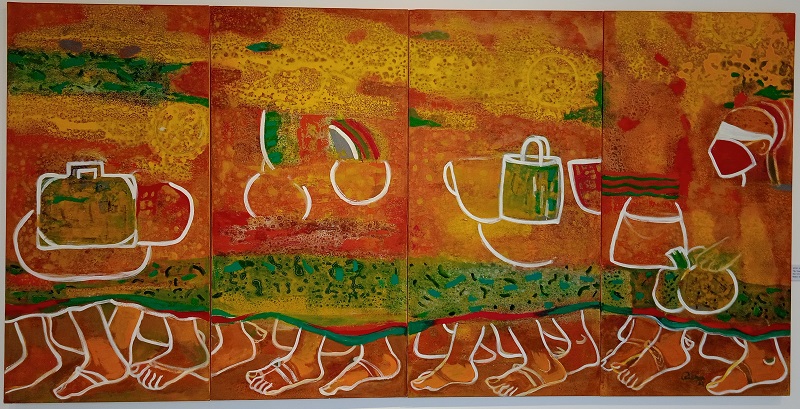
“From the beginning of my life as a painter, I have aimed to express my joys and sorrows through colour and line as freely as a child expresses its hunger by crying or its happiness through laughter, Rekah Rao said. Her art practice fulfils the imaginable eye with her poetical motion of abstract thought, with uncertainty and the voidness of actual life. What we experience as real is abstract; the artist visually narrates this reality. She brings back the eye of the abstract into the social realities at the same point and locations in her canvas.
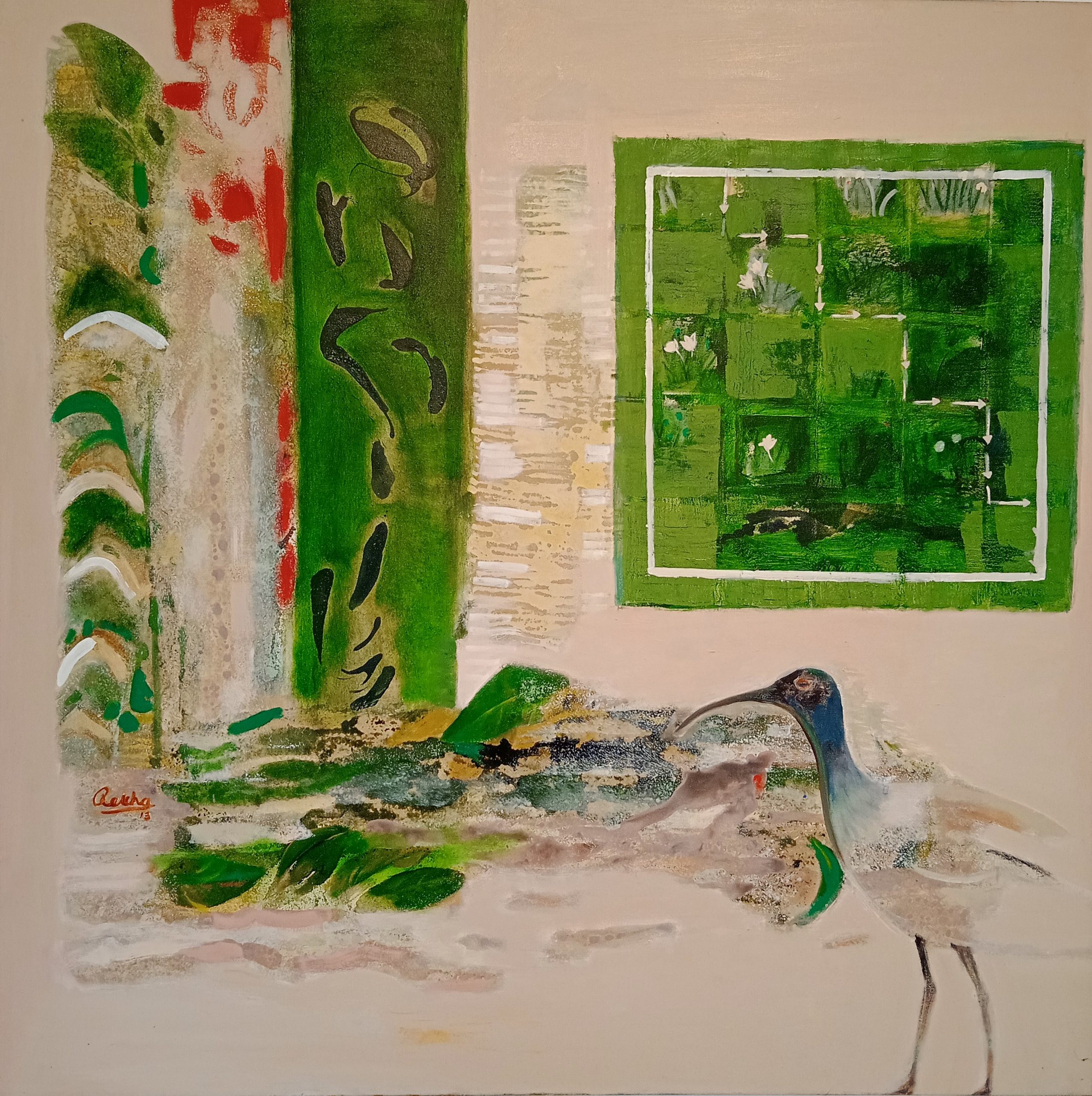
‘Here is an artist, socially conscious, aesthetically sophisticated, patiently expressionistic and visually and verbally articulate. Rekha Rao’s works are the products of her social consciousness, a vast and deep empathy with the surrounding lands, people and other beings, writes Curator John M. L in his curatorial note. As per Johny M.L, Rekha Rao elevated the abstract form painting into a pure and ideal visuality and used the richly famed colourist thought. This show is apparent in the artist’s tendency to repurpose the colours out of their fixed symbolic purpose and employ them differently for visual effects as the post-impressionists did, as Johny M L wrote.
Krispin Joseph PX
Reference: Saffronart.com

Krispin Joseph PX, a poet and journalist, completed an MFA in art history and visual studies at the University of Hyderabad.

